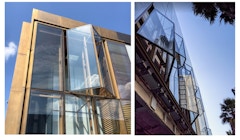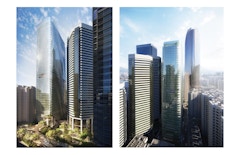
Fire Safety and Code Challenges for Mass Timber in Curtain Wall Systems
With the desire for more sustainable construction and reduced embodied energy, mass timber is being explored for building structures. For medium and…




Curtain wall design commonly uses insulating glass units for vision and spandrel glazing to provide better visual harmonization of building facade




Buildings account for over 40% of global emissions (GlobalABC, 2018). Growing populations and higher standards of living are increasing pressure on


Fidelity between the built enclosure and early visualizations is rarely, if ever, an accident. When achieved, it comes as the result of persistent

On a commercial high-rise tower project located in Hong Kong, the design team was challenged to make a facade that would beneficial to tenants with a




Climate change effects are causing an increase in extreme wind events’ frequency and severity, worldwide. Regions that previously were not prone to
